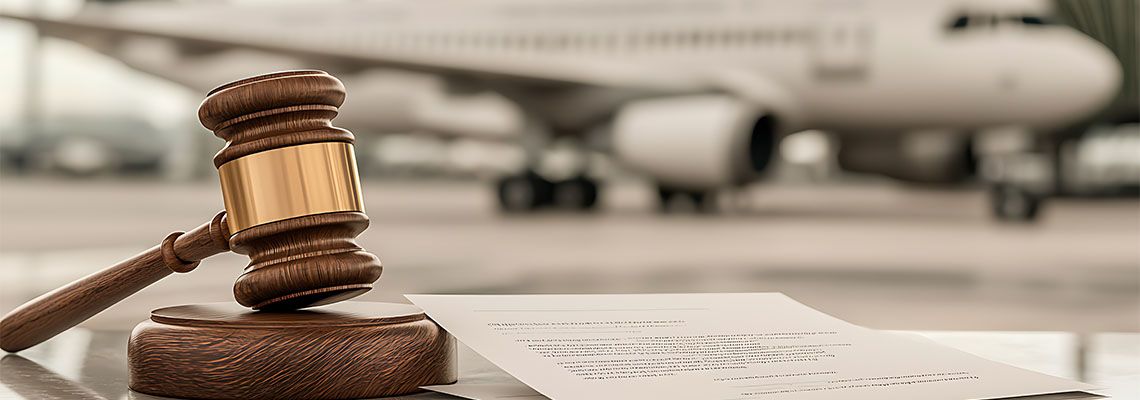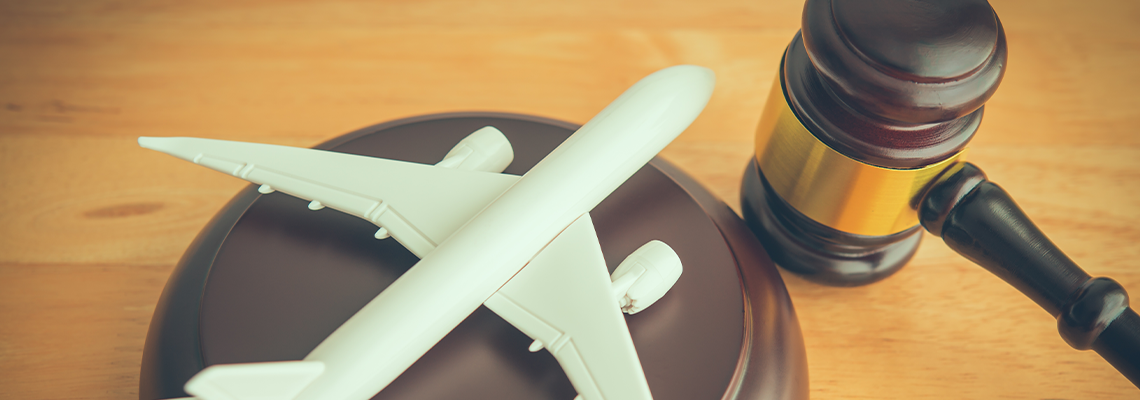Corporate aircraft are valuable assets that require meticulous care to operate safely, effectively, and in compliance with regulations. For aircraft owners, operators, and aviation businesses, it's not just about ensuring the aircraft remains airworthy but also about protecting the significant investments tied to these machines.

Aircraft Leasing: Dry Leases Vs Wet Leases
Ever wondered how airlines manage to operate flights without owning all their aircraft? The answer is aircraft leasing, a common practice in the aviation industry. According to the International Air Transport Association (IATA), more aircraft today are leased than owned by airlines globally. The percentage of leased aircraft has grown exponentially from roughly 10% in the 1970s to a staggering 58% by the end of 2023.
In the world of aviation, there are two main types of leasing arrangements – wet leasing and dry leasing. There is an ongoing debate about which type of leasing model is best, but in most cases, the choice depends on the lessee's needs and capabilities. William G. Harger & Associates, PLLC, has a good understanding of the aviation industry and helps both aircraft owners and lessees avoid pitfalls when executing a leasing transaction and other aviation business transactions. The law firm is based in Richmond, Texas, but serves clients throughout the state, including Houston, Dallas, Austin, and San Antonin, and nationwide. The firm also has many international clients.
What Is Aviation Leasing?
Aviation leasing involves leasing aircraft from leasing companies rather than purchasing them outright. This practice allows airlines to expand their fleet more flexibly and cost-effectively. Leasing can be short-term or long-term, depending on the airline's needs. The two primary types of aircraft leases are dry leases and wet leases. Each serves different purposes and offers unique benefits.
One major advantage of leasing is that it helps airlines manage their capital more efficiently. Instead of investing large sums in purchasing aircraft, airlines can allocate resources to other critical areas like operations, marketing, and customer service. Leasing also provides flexibility to adjust fleet size based on seasonal demand or changing market conditions.
Furthermore, leasing can be advantageous for newer airlines or those looking to test new routes. By leasing aircraft, these airlines can gauge route profitability without the long-term commitment of purchasing planes. Overall, leasing has become a strategic tool for airlines worldwide.
What Is a Wet-Lease Aircraft?
A wet lease involves renting not just the aircraft but also the crew, and often maintenance. Essentially, the lessor provides a fully operational aircraft and crew ready to fly. Wet leases are particularly useful for short-term needs.
What Is a Dry-Lease Aircraft?
More common in general aviation, a "dry" lease involves leasing only the aircraft itself. The lessee is responsible for providing the crew. Maintenance and insurance can be provided by either party, as desired. Dry leases are typically longer-term arrangements and are ideal for companies getting their feet wet learning what is involved in aircraft operations, or perhaps having only a temporary need for aircraft. Sometimes they are used for just filling a gap. Occasionally, a dry lease is used when one might otherwise expect to see a rental agreement.
Dry leasing offers several advantages, particularly for established operations with the necessary infrastructure and personnel to manage their fleet. By leasing aircraft, operators can increase their capacity without the financial burden of ownership.
Differences Between Dry Leases and Wet Leases
While both types of leases – dry and wet – serve the purpose of expanding an operator's fleet without the need to purchase new aircraft, these leasing models differ in their structure and usage. Understanding these differences can help operators make informed decisions based on their specific needs and circumstances.
Operational Control
Perhaps the most critical issue in aircraft leasing is--who has operational control of the aircraft? In a wet lease, the lessor retains operational control, providing the crew, maintenance, and insurance. This setup allows the lessee to focus on other aspects of their business. In contrast, in a dry lease, the lessee has full operational control, requiring them to manage all aspects of the aircraft's operation. The issue of operational control is critical in FAA scrutiny of leases. However, leasing aircraft doesn’t shield owners from liability in the event of an accident, as both the owner and lessee can be held liable after a plane crash.
Cost Implications
Wet leases are generally more expensive due to the comprehensive services provided. However, they offer the benefit of reduced operational responsibilities for the lessee. Dry leases, while less costly, place the burden of crew, and often maintenance and insurance, on the lessee, which may require additional resources and infrastructure.
Duration and Flexibility
Wet leases are often short-term arrangements, ideal for temporary capacity increases or covering for grounded aircraft. Dry leases, on the other hand, are typically longer-term, providing a stable solution for fleet expansion without the high upfront costs of purchasing aircraft.
Usage Scenarios
Wet leases are particularly useful during peak travel seasons, special events, or when entering new markets. They provide a quick and flexible solution to meet increased demand. Dry leases are more suited for long-term fleet growth, allowing operators to expand their capacity while maintaining control over operational aspects.
Interested in Aircraft Leasing? Get Help From an Attorney
Leasing aircraft isn’t an area where taking risks is appropriate. The FAA is very quick to use enforcement action when an aircraft lease does not meet proper criteria, due to the ever-present mistakes some operators make which result in what the FAA will define as an aircraft charter arrangement instead of a lease. These are tricky waters to navigate. That’s why you should always consult an attorney if you are considering leasing aircraft. William G. Harger & Associates, PLLC, has three decades of experience in the negotiation, structuring, and documentation of leasing and other finance arrangements in the aviation industry. The law firm serves clients throughout Texas, the United States, and the world. If you are ready to discuss aircraft leasing or other legal matters related to aviation, set up your consultation.
RECENT POSTS
The aviation industry is a dynamic and complex sector, where businesses often collaborate to share resources, reduce costs, and expand their reach. One of the most effective ways to achieve these goals is through a joint venture. Whether it’s a partnership between airlines to streamline operations or a collaboration between manufacturers to develop cutting-edge aircraft technology, joint ventures play a pivotal role in shaping the industry.
The rapid growth of drone technology has revolutionized the aviation industry. Once primarily associated with military operations or hobbyists, drones have become essential tools for industries such as logistics, agriculture, surveying, and filmmaking. However, as commercial and operational drone use continues to expand, so do the legal and regulatory details surrounding their operation.




